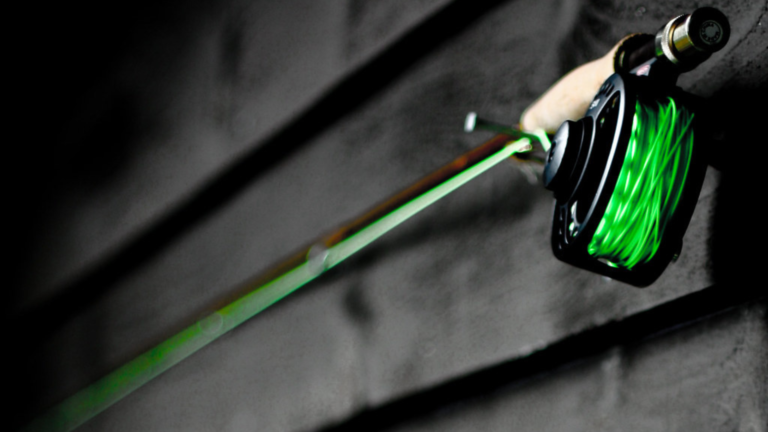How to catch a Grouper : Secrete method
How to catch a Grouper : Secrete method
How to catch a Grouper : Secrete method
Introduction
Grouper fish are most commonly seen in deep waters. During the summer, they can be caught in shallower water. It’s a huge fish that weighs more than 100 pounds. And catching big fish is fantastic. There are typically three sorts of Groupers founded. Goliath Grouper, Warsaw Grouper, and Black Grouper. I’d like to tell you briefly about those groupers first. .
- Goliath grouper

The goliath grouper, the biggest grouper species in the Atlantic Ocean, was considered for listing under the Endangered Species Act in response to overfishing in the southeastern United States. It lives in shallow tropical seas ranging from the Gulf of Mexico and Florida Keys to the Bahamas, Caribbean, and Brazilian coastlines. They are found in the eastern Atlantic Ocean, off the coast of Africa.
- Warsaw grouper

The warsaw grouper, a member of the Epinephelus genus, has ten dorsal spines, the second of which is longer than the third. Its hue ranges from grayish brown to dark reddish-brown, with little white patches along the sides. The fins are dark brown, with the exception of the white-splotched spiny part. The juvenile have a yellow caudal fin, a black saddle on the caudal peduncle, and white patches on their bodies. The warsaw grouper is more widely distributed throughout the southern United States than the goliath grouper. It extends from North Carolina to the Florida Keys, as well as across the Caribbean and Gulf of Mexico to South America’s northern coast. The species lives in uneven bottoms, notches, valleys, and drop-offs in seas 350 to 650 feet deep. They are long-lived, reaching up to 6 feet and over 300 pounds, and their large mouth allows them to engulf prey whole.
- Black grouper

Coloration varies greatly depending on the fish’s size. Brownish gray in hue with dark worm-like patterns on sides; sharp serrated spur at bottom border of preopercle, less evident in large individuals; fins dark, with anal and caudal having white margins; sometimes mistaken with gag grouper; most noticeable distinctions are brassy dots on black grouper. The tail of the gag is somewhat concave, whereas the tail of the black grouper is square; the gag has a white edge on its anal and caudal fins, but the black grouper does Under 10 pounds, gag’s spur on the preopercle is unusual, with black that is softly rounded.
How to catch a Grouper fish
In my experience, early mornings have been the best times for grouper fishing. The cooler water seems to make the fish more active. Also, staying alert is crucial—groupers strike quickly, and you need to be ready. I’ve had trips where I was a second too slow and missed out on a catch, so being on your toes really pays off.
So if you’re planning a grouper fishing trip, remember these tips from my own adventures. Get your gear in check, find the right spot, use the best bait, and be prepared for a fight. With a little patience and persistence, you’ll be well on your way to landing that grouper and creating some great fishing memories!
Gear Up Properly
- Heavy-Duty Rod and Reel: Groupers are strong and put up a good fight. Make sure your gear can handle the challenge.
- Braided Line: Use a braided line, typically 50-100 lb test, for its strength and abrasion resistance.
Choose the Right Bait
- Live Bait: Groupers love live bait like pinfish, grunts, or sardines. The livelier, the better!
- Cut Bait: If live bait isn’t available, cut bait can also be effective. Just make sure it’s fresh.
Find the Right Spot
- Reefs and Wrecks: Groupers hang out around structures like reefs, shipwrecks, and rocky bottoms. These areas provide them with cover and plenty of food.
- Depth: Depending on the species, you might need to fish in waters ranging from 20 to 200 feet deep.
Technique Matters
- Drop the Bait: Lower your bait to the bottom, then reel up a few feet to keep it just above the structure.
- Patience and Precision: Groupers are opportunistic feeders, so be patient. When you feel a bite, set the hook firmly and quickly.
So if you’re planning a grouper fishing trip, remember these tips from my own adventures. Get your gear in check, find the right spot, use the best bait, and be prepared for a fight. With a little patience and persistence, you’ll be well on your way to landing that grouper and creating some great fishing memories!
How to catch a Grouper in the gulf
Catching groupers in the Gulf of Mexico is an exciting and gratifying activity. These robust fish are recognized for their strength and size, making them a popular target among fishermen. Based on my own experiences, here’s a guide to help you land one of these impressive fish, with a few key points highlighted for clarity.
Key Points to Remember
- Heavy-Duty Rod and Reel: Essential for handling the strength of a grouper.
- Live Bait: Pinfish, grunts, and sardines are top choices.
- Drop Bait to the Bottom: Keep it just above the structure to attract groupers.
- Quick Reflexes: Be ready to set the hook and start reeling immediately.
Conclusion
Fishing for grouper is an adventure that combines skill, patience, and a bit of luck. With the right gear, the best bait, and the knowledge of where to find these magnificent fish, you’re set for a thrilling experience. I still remember the rush of excitement the first time I hooked a big grouper. The powerful pull, the intense fight, and finally seeing that huge fish break the surface—it’s a memory that never fades. Remember these tips and prepare for an unforgettable fishing experience. Whether you’re a seasoned angler or a newbie, catching a grouper will always be a story worth telling.






